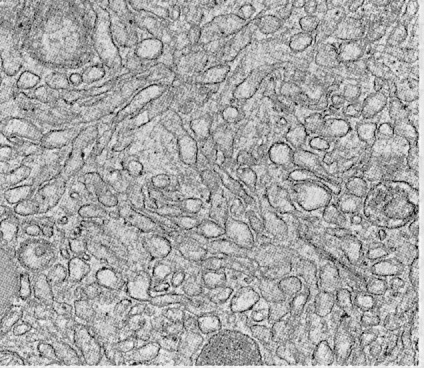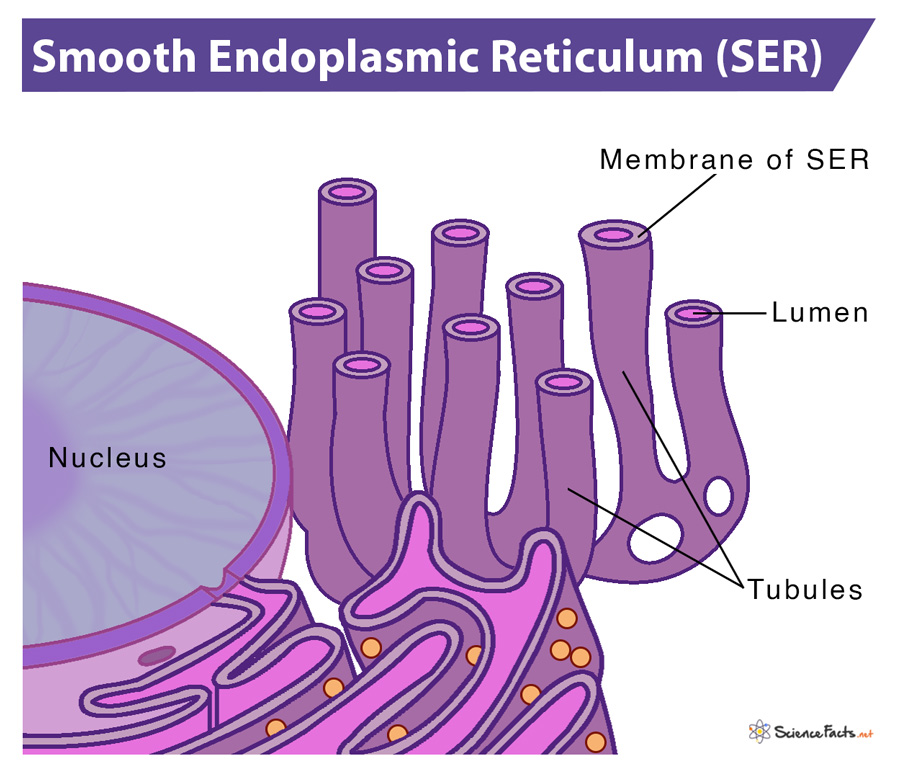Smooth Endoplasmic Reticulum
The smooth Endoplasmic Reticulum (SER) is a cell organelle found in all eukaryotic cells, including plants and animals. It is a mesh-like network of membranes whose basic function is to help produce and distribute cellular products like proteins, lipids, and other molecules throughout the cell.
Location of Smooth Endoplasmic Reticulum
In a cell, they are located in the cell periphery, near the external membrane of the nucleus. The number of smooth ER units in a cell depends on its type and manufacturing needs.
Structure of SER
SER is an extended network of folded, tube-like structures called tubules. These tubules sometimes divide into branches and give a network or reticulate-like appearance. It is analogous to a pipeline having a lot of twists and turns. SERs are about 50 nm in diameter in mammals and 30 nm in yeasts.
The interior of the smooth ER is called the lumen, enclosed by a phospholipid membrane similar to the cell membrane enclosing the entire cell. Unlike RER, it lacks ribosomes on its outer membrane, thus named ‘smooth’.
Functionsof SER
The importance of SER may vary depending on the cell type. For example, some endocrine glands synthesize lipids. In the liver, it helps detoxify or remove several drugs from the body. Some other roles of SER include regulating calcium concentration in the muscle cells and carbohydrate metabolism in the liver and kidneys.
These purposes of SER in a cell are described below in detail:
1. Lipid Synthesis
SER is the primary site for lipid synthesis, where SER makes close contact with other cell organelles. Such sites, known as membrane contact sites (MCS), also help to transfer substances between them. The enzymes in those sites help synthesize the vast majority of cellular lipids.
Some common lipids formed by SER are phospholipids, sterols, and steroids. The lipids thus synthesized include a significant portion of the cell membrane’s lipid bilayer. They also form the structural elements of the cell.
2. Detoxification
The dynamic nature of SER helps detoxify many substances, including drugs, making them easy to remove from the liver cell. A particular group of enzymes, cytochrome P450s, carry out these jobs. These enzymes act by adding a hydroxyl group to drug molecules, making them more soluble and easier to flush from the body.
3. Regulation of Calcium Ion Concentration
In muscle cells, for example, a specialized SER called the sarcoplasmic reticulum (SR) is responsible for the storage and regulation of calcium ions required to trigger the coordinated contractions of the muscle cells.
The SR takes up the calcium ions from the cytoplasm and releases them when the muscle cell is triggered by a nervous stimulus, resulting in muscle contraction. In this manner, the sarcoplasmic reticulum helps regulate calcium ion concentrations in the cytoplasm of skeletal muscle cells.
In nerve cells, the intake or release of calcium ions controls neuronal activity, such as its contraction, relaxation, and transfer of nerve impulses.
Calcium ions released from the smooth endoplasmic reticulum also stimulate the secretion of vesicles that contain new proteins.
4. Carbohydrate Metabolism
The metabolism of carbohydrates such as glucose provides energy for all living organisms. SER produces an enzyme called glucose 6-phosphatase, which hydrolyses 6-phosphate to glucose during glucose synthesis from non-carbohydrate precursors like pyruvate, oxaloacetate, succinate, and lactate through gluconeogenesis.
The glucose 6-phosphatase formed by gluconeogenesis is transported to the lumen of SER, where it finally forms glucose by the action of the glucose-6-phosphatase.
Diseases Caused by Dysfunctional SER
Dysfunction of SER is the cause of several diseases such as neurological disorders, including Cerebral ischemia, sleep apnoea, Alzheimer’s disease, multiple sclerosis, amyotrophic lateral sclerosis, prion diseases, and familial encephalopathy.
Disorders such as Von Gierke disease affecting glycogen metabolism and Cytochrome P450 oxidoreductase deficiency (PORD) affecting steroid hormone synthesis, development of the skeletal system, reproductive system, and some other parts of our body are also caused due to some malfunction in SER.
-
References
Article was last reviewed on Tuesday, May 9, 2023






The electron micrograph shows rough ER, not smooth ER.
We have replaced the diagram with the correct one